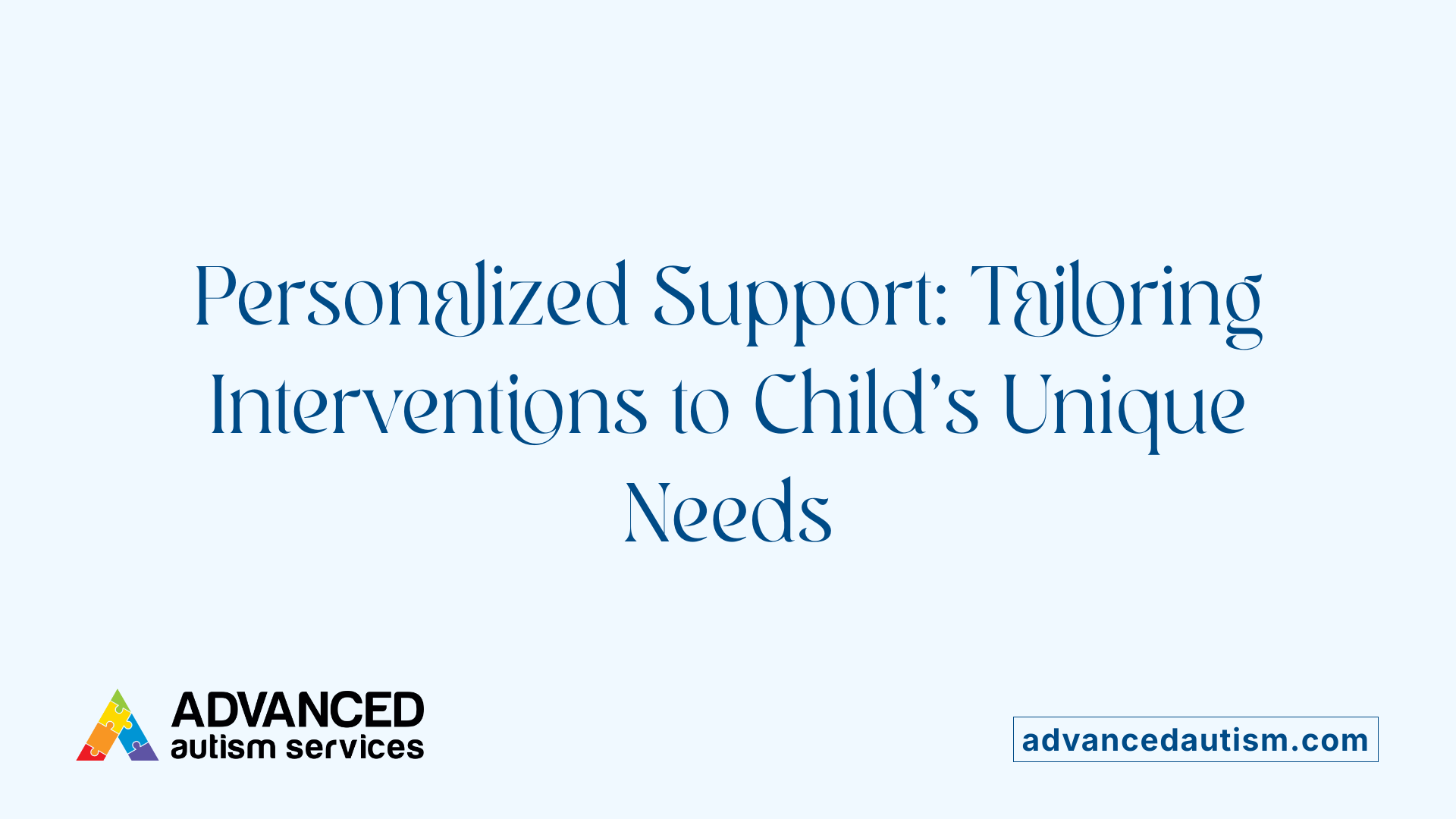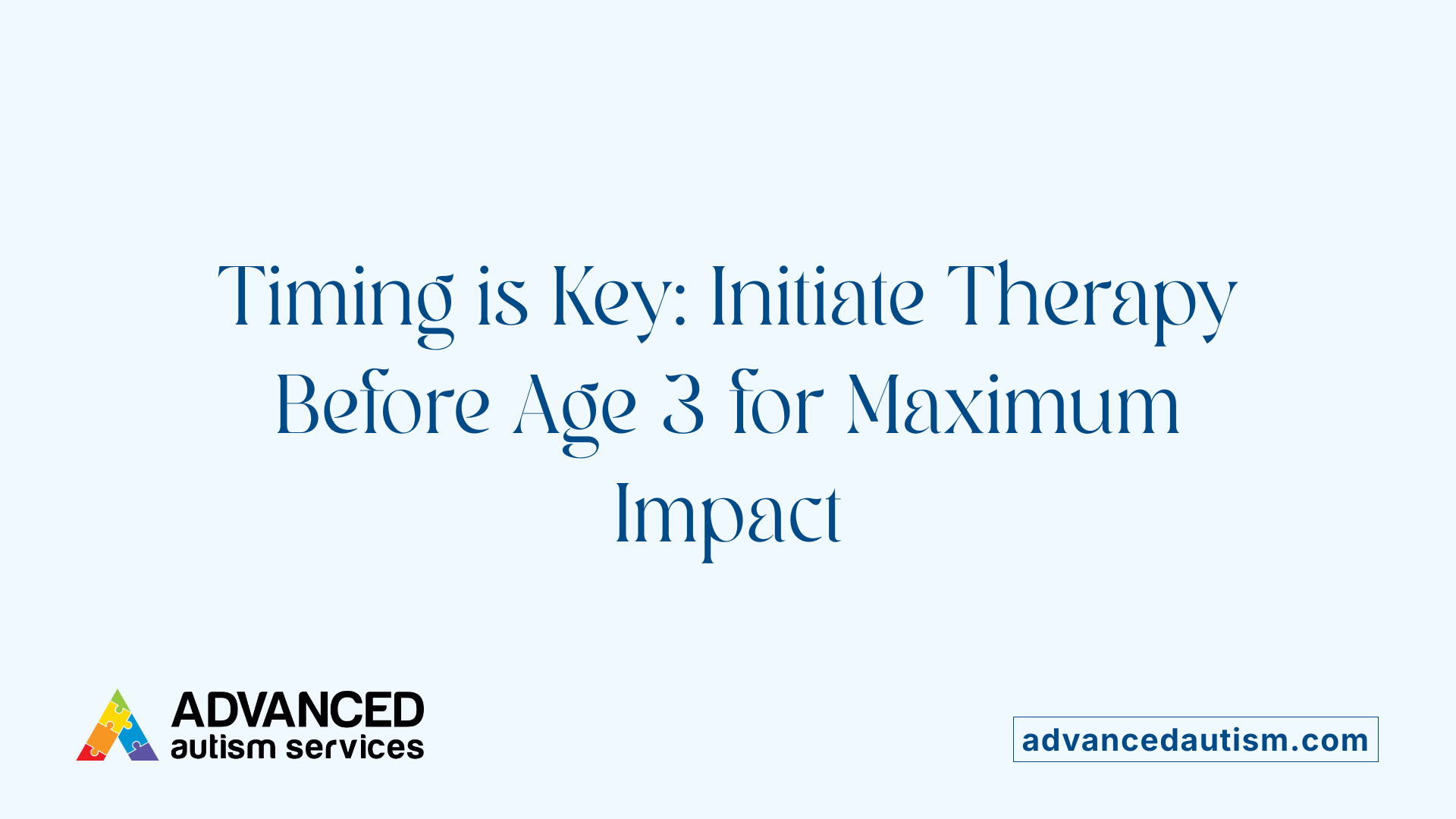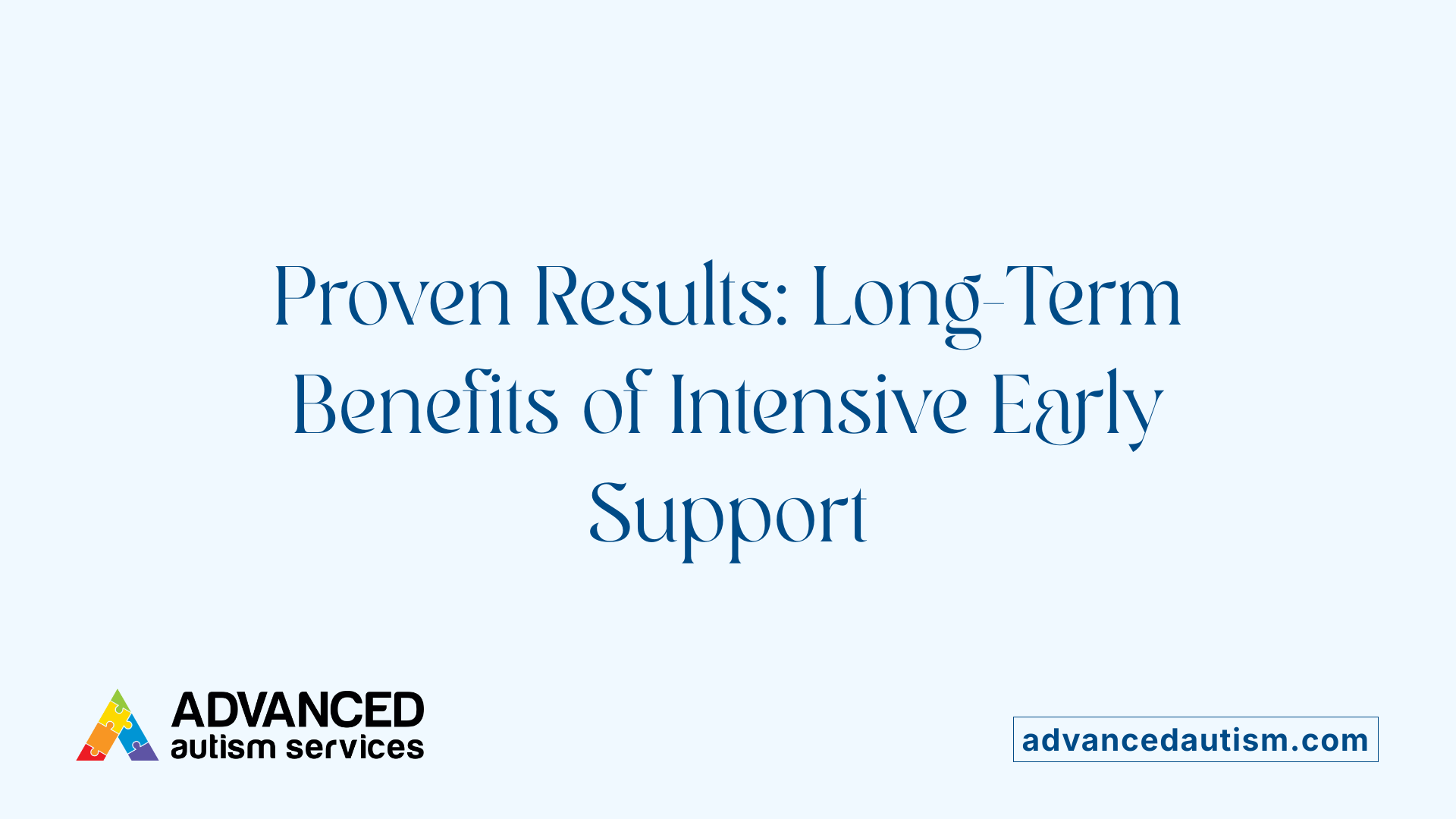The Critical Importance of Beginning Support Early
Research overwhelmingly supports that initiating early intervention for children with autism spectrum disorder (ASD) significantly enhances their developmental trajectory. By leveraging the brain's heightened plasticity during early childhood, interventions started before age three can lead to sustained improvements across cognitive, social, and communicative domains. This article explores the core strategies, scientific evidence, and long-term benefits of early autism intervention, highlighting its role in shaping a brighter future for affected children.
Types of Early Autism Interventions and Their Approaches

What are the main types of early intervention strategies for autism?
Early intervention for autism spectrum disorder (ASD) encompasses a range of approaches tailored to support children's developmental needs. These strategies broadly fall into behavioral, developmental, and communication-focused therapies, each targeting specific skill areas.
Behavioral therapies, such as Applied Behavior Analysis (ABA), are among the most widely used. These approaches emphasize reinforcing desirable behaviors while reducing problematic ones. Variations like the Early Start Denver Model (ESDM) and Pivotal Response Treatment (PRT) modify traditional ABA principles to suit very young children with ASD, often involving intensive, one-on-one sessions. These therapies focus on teaching social, communication, and cognitive skills through structured activities.
Developmental and relationship-based therapies aim to strengthen emotional and social bonds. An example is Floortime (also known as DIR/Floor Time), which encourages children to engage in play that fosters emotional regulation, social interaction, and cognitive flexibility. Relationship Development Intervention (RDI) also emphasizes creating warm, responsive relationships that support social-emotional growth.
Communication-focused therapies tackle language and expressive skills. Speech therapy, including techniques using Picture Exchange Communication Systems (PECS) and augmentative and alternative communication (AAC) devices, help children develop both spoken and non-verbal communication. These interventions are customized to meet each child's unique learning style and communication needs.
In addition to these core therapies, sensory integration therapies help children manage sensory sensitivities and improve daily functioning. Individualized educational programs are designed to support integration into typical learning environments, using play-based and tailored strategies to foster skills across multiple areas.
Together, these intervention types provide a comprehensive framework to promote growth in social skills, communication, cognitive development, and emotional well-being, giving children the best foundation for lifelong learning and adaptation.
Why Early Intervention is Vital for Long-Term Success

Why is early intervention for autism important?
Early intervention for autism involves providing specialized support and therapies to children as early as possible, ideally before age three. This approach capitalizes on the brain's rapid development during early childhood, maximizing the potential for positive outcomes.
Research shows that early diagnosis and immediate intervention significantly improve long-term skills and reduce the severity of autism symptoms. When children begin therapy between 18 and 30 months, they often experience notable improvements in intellectual ability, language, and social interaction.
Harnessing brain plasticity during early childhood
During early years, a child's brain is highly adaptable—a trait known as neuroplasticity. This means that targeted interventions can reshape neural connections, supporting better development in communication, social skills, and behavior.
The study from the University of Washington and UC Davis MIND Institute highlights that children receiving the Early Start Denver Model (ESDM) therapy at a young age maintain gains in IQ, language, and social skills even two years after the intervention ends. Early intervention maximizes this plasticity, leading to stronger, longer-lasting improvements.
Maximizing developmental gains in cognition and social skills
Early intensive therapies foster growth in crucial areas such as language, thinking, and social engagement. Programs like ESDM integrate behavioral techniques with developmental approaches, promoting natural learning and relationship-building.
Children involved in these programs often show progress that can lead to reduction in autism symptoms and improved adaptive skills. In some cases, children have advanced enough to no longer meet criteria for an autism diagnosis, particularly if therapy begins very early and the child has other favorable factors like higher IQs.
Targeting core autism symptoms early to alter long-term trajectories
Interventions aimed at core issues—communication deficits, social interaction difficulties, and repetitive behaviors—can fundamentally alter a child's developmental path. Starting before age three allows children to develop foundational skills, making later learning and integration easier.
The study findings indicate that early intensive intervention can lead to a decrease in autism severity and better behavior regulation, supporting better outcomes across the lifespan.
Timing is crucial for effective intervention
Timing plays a significant role in intervention success. Initiating therapy shortly after diagnosis or suspicion of ASD taps into the brain's most plastic phase, enabling quicker and more substantial gains.
Guidelines now recommend starting developmentally integrated behavioral therapies as soon as autism is suspected. Early intervention not only promotes immediate skill development but also contributes to long-term improvements, such as better academic performance and social relationships.
| Aspect | Impact | Notes |
|---|---|---|
| Brain plasticity | Enhances learning and adaptation | Critical during ages 18-30 months |
| Cognitive development | Improved problem-solving and memory | Long-lasting benefits |
| Social skills | Better social engagement and communication | Reduces frustration |
| Symptom severity | Decreased autism core symptoms | Alters developmental trajectories |
| Family involvement | Supportive home environment | Reduces caregiver stress |
In summary, early intervention, particularly with models like ESDM, leverages the child's natural developmental window to promote meaningful, lasting improvements. These early efforts set the stage for optimal growth and integration into life and learning experiences.
Scientific Evidence Demonstrating Efficacy of Early Intervention

How effective is early intervention for autism in improving developmental outcomes?
Research spanning over two decades underscores the significant benefits of early intervention for children with autism spectrum disorder (ASD). Studies focusing on programs like the Early Start Denver Model (ESDM) have shown that starting therapy at ages 18 to 30 months leads to lasting improvements.
The ESDM combines behavioral techniques with relationship-based approaches, promoting social, communication, and learning skills. Children who participate in this intensive program for over two years exhibit notable gains in IQ, language, and adaptive behavior. For example, the average IQ increase in children receiving ESDM was approximately 18 points, much higher than the 4-point improvement seen in children undergoing conventional community therapy.
Crucially, these benefits are not fleeting. Follow-up evaluations conducted two years after therapy concluded reveal that children in the ESDM group maintain their gains. Many show continued reductions in autism symptoms, with some no longer meeting diagnostic criteria. Their enhanced social and communication skills have a lasting impact, improving their quality of life and ability to function independently.
Furthermore, the evidence indicates that early, intensive intervention can modify the developmental course of autism, especially when started before age 2. The integration of therapy into the child's natural environment with family involvement maximizes outcomes. Recent research advocates for prompt diagnosis and initiation of interventions like ESDM to capitalize on the brain's plasticity during early childhood.
In summary, early behavioral interventions such as ESDM and Applied Behavioral Analysis (ABA) have demonstrated long-term effectiveness. They promote cognitive and social development and can even alter the trajectory of ASD, leading to fewer symptoms and better adaptive skills as children grow older.
Long-Term Benefits and Future Potentials of Early Support
What is the long-term impact of early therapeutic programs for children with autism?
Early intervention programs, especially those implemented during the critical developmental period before age 3, have proven to offer lasting benefits for children with autism spectrum disorder (ASD). These programs, such as the Early Start Denver Model (ESDM), focus on enhancing communication, social skills, and cognitive abilities. Evidence from recent studies indicates that children who receive intensive, personalized therapy as young toddlers maintain significant gains in IQ, language skills, and social interactions years after treatment ends.
Children in early intervention show not only a reduction in autism symptoms but also improvements in adaptive behaviors that support a more independent and functional life. For example, some children progress enough to be removed from the autism spectrum diagnosis as they grow older. These positive outcomes emphasize that starting treatment early maximizes neural plasticity, making it easier for children to learn essential skills and reduce the severity of core symptoms.
How does early intervention influence cognitive and social skills into adulthood?
Children who begin receiving targeted support early tend to develop stronger cognitive and social skills than those who do not. Studies show that early interventions lead to better problem-solving, memory, and learning abilities later in life. Socially, these children often engage more confidently with peers and adults, understand social cues better, and communicate more effectively.
This foundation not only helps children function well in school but also prepares them for more complex social environments as they mature. Improved social skills contribute to higher quality of life, greater independence, and more meaningful integration into community and work settings.
Can some children leave the autism spectrum with early, consistent support?
Remarkably, some children diagnosed with ASD at a very young age have been able to reduce their symptoms substantially or even transition out of the spectrum entirely due to early, intensive therapy. This transition is more likely in children diagnosed early, particularly those with higher IQs and better language skills.
Long-term evidence suggests that ongoing support and intervention reinforce these gains, helping children adapt and develop autonomy. While not all children will completely transition out of autism, early intervention enhances their developmental trajectories significantly.
What are the benefits for independence and quality of life in adolescence and beyond?
Early, sustained intervention contributes to improved independence during adolescence and adulthood. Skills learned during early childhood—such as communication, self-care, and problem-solving—are vital for living independently and participating actively in society.
Moreover, early intervention can reduce the severity of symptoms that might otherwise hinder daily functioning, leading to better educational, employment, and social outcomes. Overall, these programs serve as a catalyst for lifelong development, setting the stage for more autonomous and fulfilling lives.
How does early intervention act as a catalyst for lifelong development?
By targeting development during the brain’s most plastic phase, early intervention programs capitalize on the natural growth processes. They lay a strong foundation for future learning and social integration. With consistent support, children with autism show gains that persist into adulthood, including higher independence levels, improved mental health, and better overall quality of life.
Investing in early identification and intervention not only reduces immediate challenges but also maximizes the potential for lifelong success, turning early developmental windows into opportunities for building resilient, capable individuals.
Barriers, Resources, and Future Directions in Autism Early Intervention
Challenges in accessing early intervention services
Many families face obstacles when seeking early intervention for children with autism. These challenges include limited awareness of available therapies, geographic barriers, long wait times, and financial constraints. Early diagnosis can also be complicated, especially in cases where symptoms are subtle or developmental delays are initially attributed to other causes.
Role of non-profit, government, and insurance support
Fortunately, several resources exist to help families navigate these barriers. Non-profit organizations often provide information, advocacy, and financial assistance. Government programs may offer federal or state-funded services designed to support early intervention initiatives. Insurance coverage, including Medicaid and private insurance policies, can also help to offset the costs associated with therapies such as speech, occupational, and behavioral interventions.
Advances in research methodology and measurement
Recent progress in research methods involves improving trial designs, including randomized controlled trials, to ensure more reliable results. Efforts are also underway to develop standardized tools for measuring developmental progress, symptom reduction, and overall outcomes in children receiving interventions. These advances aim to clarify what treatment approaches are most effective.
Continued need for high-quality, rigorous studies
Despite promising findings, there is a need for continued, well-designed research. Many existing studies vary in methodology, making comparisons difficult. Rigorous research helps establish best practices, refine intervention techniques, and develop personalized treatment plans tailored to individual needs.
Emerging therapies and personalized intervention plans
Emerging therapies focus on customized approaches that incorporate genetic, behavioral, and developmental factors. These personalized plans can optimize outcomes by addressing unique profiles of autism symptoms and strengths. Combined with ongoing technological innovations, such as digital tools and virtual therapy, these approaches hold promise for enhancing early intervention efforts in the future.
| Resource Type | Examples | Purpose |
|---|---|---|
| Non-profit Organizations | Autism Speaks, local autism societies | Advocacy, information, financial help |
| Government Programs | Medicaid, state-funded services | Access to therapy, assessment support |
| Insurance Support | Private insurance, Medicaid | Coverage for therapies and assessments |
This multi-layered approach underscores that with the right support and ongoing research, early intervention can be more accessible and effective, ultimately improving long-term outcomes for children with autism.
Conclusion: Optimizing Long-Term Outcomes with Early Intervention
How does early diagnosis influence treatment success?
Early diagnosis of autism spectrum disorder (ASD) is fundamental in enabling timely interventions that capitalize on the brain's plasticity during critical developmental periods. Research demonstrates that diagnosing children before age 2 allows for intervention programs like the Early Start Denver Model (ESDM) to begin at a stage when their brains are most receptive to change. This early start significantly improves skills in language, social interaction, and cognitive development, setting a positive trajectory for their future.
Why is parental involvement crucial in early intervention?
Involving parents in therapy sessions and training enhances the effectiveness of early intervention strategies. Parents who are equipped with knowledge and tools can create supportive, consistent routines at home, use visual aids, and foster learning environments tailored to their child's needs. Such involvement not only accelerates developmental gains but also reduces caregiver stress by empowering families to actively participate in their child's progress.
What role do ongoing research and innovations play?
Advances in trial methodology and intervention techniques continually refine early autism therapies. New approaches, like naturalistic development strategies and added behavioral components, are tested to increase efficacy. Innovations help address challenges such as research heterogeneity and methodological limitations, making therapies more effective and personalized. These efforts ensure children receive the most beneficial and up-to-date support possible.
Why are policy and community support essential?
Accessibility to early intervention depends heavily on public policies, community programs, and insurance coverage. Effective policies enable early diagnosis, subsidize therapy costs, and promote inclusive education. Community awareness and support networks help families navigate available services, ensuring children receive the needed therapies promptly. Such support systems are vital for reducing disparities and increasing access to life-changing early interventions.
| Aspect | Importance | Additional Details |
|---|---|---|
| Early Diagnosis | Maximizes intervention benefits | Detects ASD as early as possible, enabling treatment before age 2 |
| Family Involvement | Enhances developmental gains | Parental training improves therapy outcomes and reduces stress |
| Research & Innovation | Continually improves therapies | Focus on personalized, effective interventions |
| Policy & Community | Ensures access | Government programs, insurance coverage, awareness campaigns |
While early intervention cannot cure autism, it significantly improves developmental outcomes. Children who begin therapy early, especially in the crucial first years, are more likely to develop communication, social, and cognitive skills comparable to their peers. The combination of early diagnosis, family participation, ongoing research, and supportive policies creates an environment where children with ASD can reach their full potential.
A Future Shaped by Early Support and Ongoing Research
The evidence unequivocally underscores that early intervention is a critical factor in improving long-term outcomes for children with autism. By targeting young children's brain plasticity through personalized, evidence-based therapies, families can support meaningful development across core areas such as communication, socialization, and cognition. While autism remains a lifelong condition, early support can substantially reduce symptom severity, foster independence, and enhance quality of life. Continued investment in research, policy support, and resource availability is essential to extend these life-changing benefits to more children worldwide. The promise of early intervention signifies a future where children with autism can reach their full potential, contributing richly to their communities and leading more independent, fulfilling lives.
References
- Early intervention improves long-term outcomes for children with ...
- Early Intervention for Autism | NICHD
- Early intervention for very young children with or at high likelihood ...
- Study finds autism early intervention highly effective
- Why Early Intervention Matters for Autism
- [PDF] The Impact of Early Intervention Programs on the Long-Term ...
- Long-Term Outcomes of Early Intervention in 6-Year-Old Children ...
- Early Behavioral Intervention for Autism - LittleStar ABA Therapy



